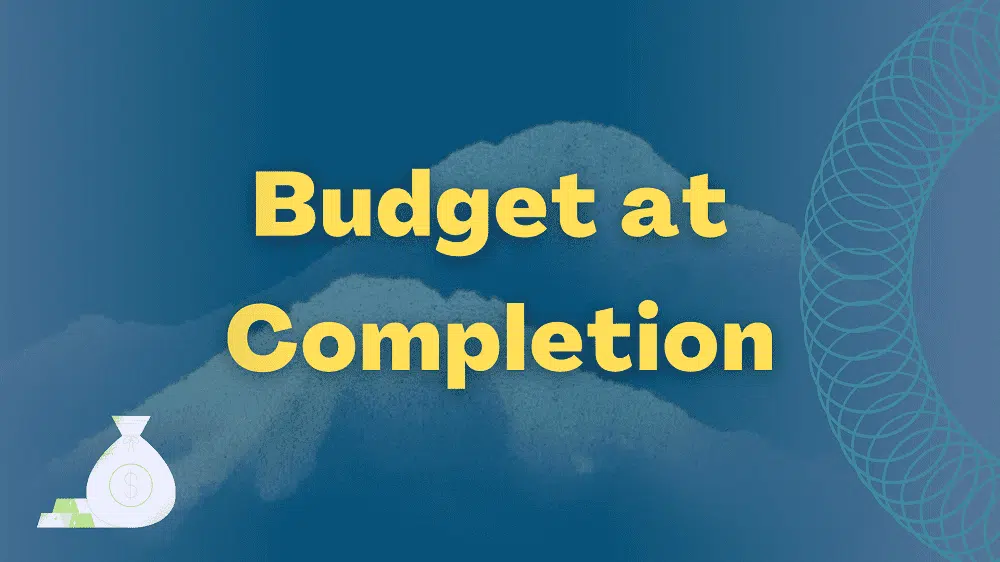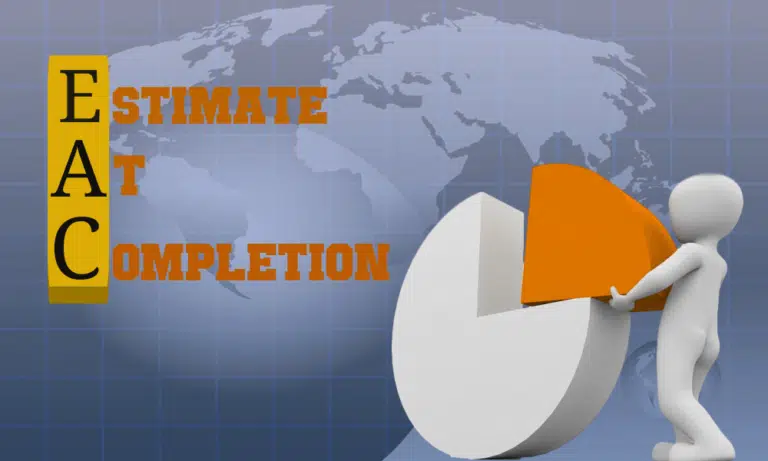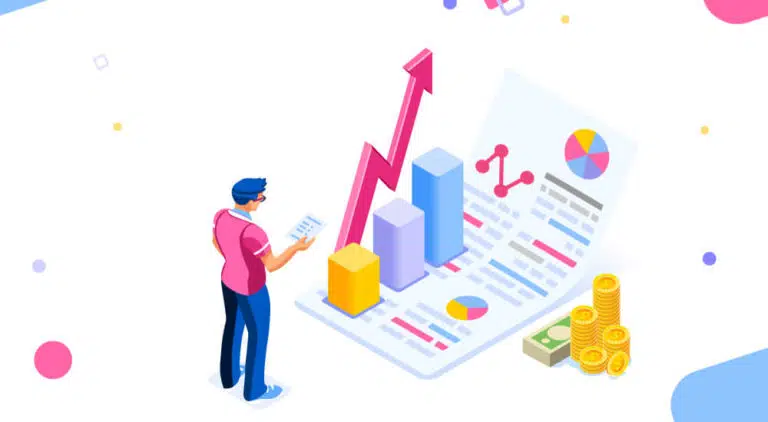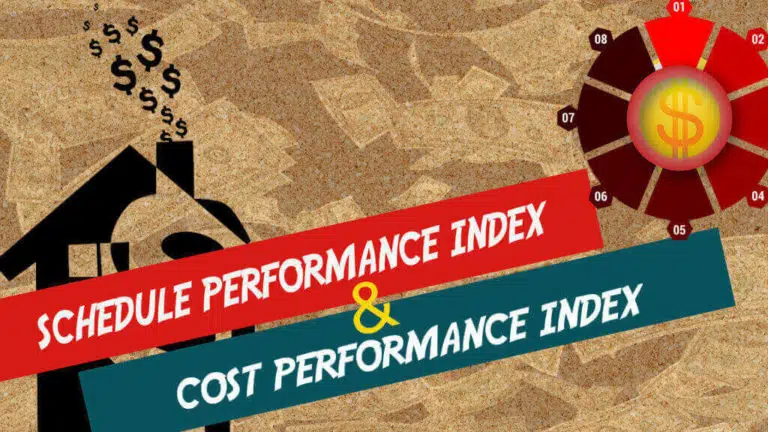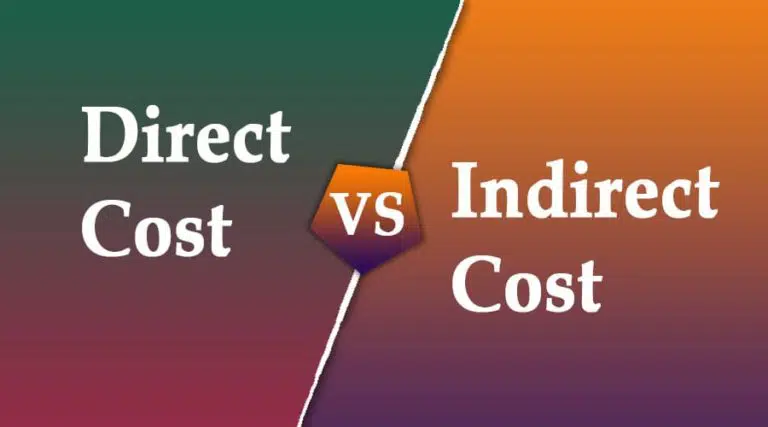Budget at completion (BAC) is a key aspect of project management, as it provides the project budget. This is the metric that all project stakeholders are concerned about, and you must ensure that the project is completed within the approved BAC.
Today’s blog post will discuss the budget at completion process, its formula, and how to calculate it.
Let’s get started.
What is Budget At Completion (BAC)?
The budget at completion is the total cost of the project. The PMBOK Guide defines it as “the sum of all budgets established for the work to be performed.” It is the total planned value for the project.
The BAC is a static figure against which you measure the performance of your project progress. If your cost is more than the BAC, you say that the project is over budget; otherwise, it is under budget. Budget at completion is the key metric the project management keeps watching throughout the project lifecycle.
The BAC value is used in earned value management analysis and in developing the progress and performance reports.
Using the BAC value, you can calculate the planned value for the completed project work.
Definition: Budget at completion (BAC) is the total budget estimated for all project tasks. In other words, it is the project budget.
BAC helps with earned-value calculation. For example, if the BAC is 100,000 USD, and 25% of the work has been completed, the planned value is 25,000 USD.
PV = BAC X Percentage of Completed Work
= 100,000 X 0.25
= 25,000 USD
As another example, if the BAC is 100,000 USD, and 30% of the project work is completed, you can calculate the planned value by multiplying 100,000 x 30% = 30,000.
Formula to Calculate the BAC
Though there is no BAC formula, you can use the following equation to calculate the BAC:
BAC = Cost of Activities + Contingency Reserve + Management
After adding the contingency and management reserve to the project cost, you will have the BAC.
How to Determine Budget at Completion (BAC)
You can determine the budget at completion using several cost estimation tools.
The five techniques to calculate the BAC are:
- Analogous Estimation
- Expert Judgment
- Parametric Estimation
- Three-Points Estimation
- Bottom-Up Estimation
Calculating BAC is a lengthy process, and no single BAC formula exists. Depending on the situation, you must use a suitable technique to find the BAC. Note that BAC provides a definitive estimate with the highest degree of accuracy. The result of the rough order of magnitude process does not represent BAC.
Analogous Estimation
If the project is simple, this technique provides a good result, but for a complex project, you should not use this technique to determine BAC as the accuracy of this method is not good.
In this technique, you will find a similar past project completed by your organization, compare it to your project, and use an educated guess to deduce your project budget.
You can use this technique when limited project information is available and you need a quick result. Though this technique does not provide an accurate and reliable estimate, it offers a fast result.
The accuracy is a rough order of magnitude and can be between -25% and 75%.
Sometimes, this technique is known as a top-down estimation.
Management uses this technique during the feasibility analysis or when performing a cost-benefit analysis. At this stage, they do not require an exact budget; they only need an idea to decide whether to proceed with the project.
Expert Judgment
In expert judgment, you will bring in subject-matter experts and conduct a brainstorming session to calculate the budget at completion. The subject-matter experts can use any technique to determine the budget (e.g., analogous estimating, parametric estimation, etc.).
The accuracy of the estimates depends on the techniques employed, the experts’ experience, and the project complexity.
Parametric Estimation
This technique also uses historical data but relies on statistical data. It takes data from recent similar projects and applies it to the current project.
For example, you can find the cost of painting per square foot, then find the painting area or your project and multiply it by the rate from the previous project to get a painting estimate.
Likewise, you can find other estimates.
The accuracy of parametric estimation is better than analogous estimation.
Three-Point Estimation
Triangular estimation and PERT estimation are examples of three-point estimation. This technique removes biases from the estimation and is used when the estimation has uncertainty.
This estimation uses three estimations for a task and then takes their average.
The accuracy of this estimation is better than the analogous estimation.
Bottom-Up Estimation
This technique provides the most accurate budget (also known as the “definitive technique”).
Here, you estimate the cost of each activity, roll them up, and get the final result. This technique takes time, effort, and cost.
The accuracy of bottom-up estimation is between 5% and 10%.
Project managers use the bottom-up estimation technique during the planning stage when they require the most accurate project budget to develop cost and schedule baselines.
Budget at Completion (BAC) Example with Calculations
Let’s say you want to construct a house.
The breakdown of the cost for this project will be as follows:
- Planning & Architect Cost: 10,000 USD
- Material Cost: 400,000 USD
- Other Accessories (Lighting, Plumbing, Painting, etc.): 100,000 USD
The budget at completion for this project will be 510,000 USD.
Summary
The budget at completion (BAC) is the total project budget. It is calculated before the project team starts the project or during the planning stage, depending on the requirement. Analogous estimation provides quick results, but accuracy is poor, and bottom-up estimation provides accurate and reliable results but consumes time.
This concept is important from a PMP exam point of view. Therefore, you may see a few questions on this topic in the PMP exam.

I am Mohammad Fahad Usmani, B.E. PMP, PMI-RMP. I have been blogging on project management topics since 2011. To date, thousands of professionals have passed the PMP exam using my resources.

